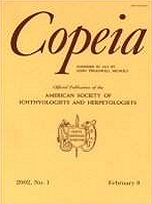Male and female Red-Backed Salamanders (Plethodon cinereus) establish territories under cover objects (rocks, logs) on forest floors of northeastern North America. Because females should be food limited and males mate limited in terms of fitness, we tested the hypothesis that territorial residents and invaders should differ intersexually in certain morphological or behavioral traits. We displaced males and females from cover objects on the forest floor at Mountain Lake Biological Station, Virginia, and monitored homing by displaced individuals and invasion of vacated cover objects by novel individuals. Neither residents nor invaders differed significantly intersexually in snout–vent lengths, total lengths, or sizes of cover objects inhabited. Also, the number of male versus female residents that successfully returned to their cover objects did not differ significantly. However, significantly more females than males invaded vacated cover objects, and they did so significantly faster. These data suggest that males and females play different strategies related to territorial acquisitions, which may reflect their different requirements for maximizing individual fitness.
How to translate text using browser tools
1 January 2000
Socioecology of a Terrestrial Salamander: Females and Males as Territorial Residents and Invaders
Sarah J. Toll,
Robert G. Jaeger,
Jennifer R. Gillette
ACCESS THE FULL ARTICLE





